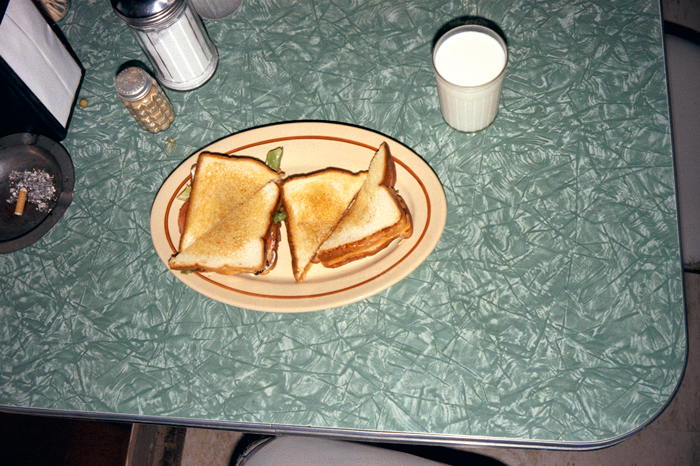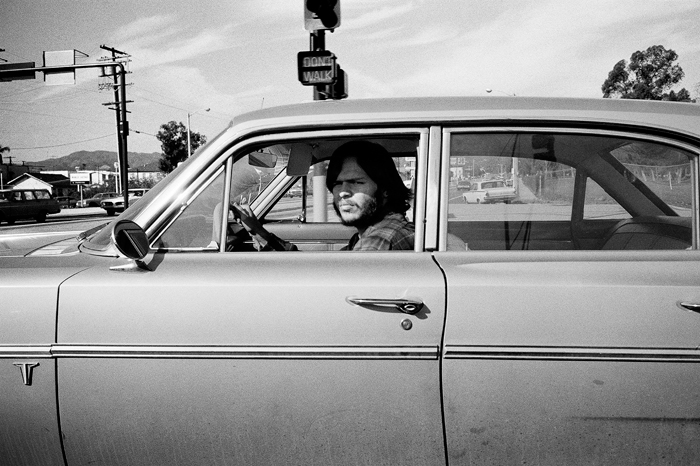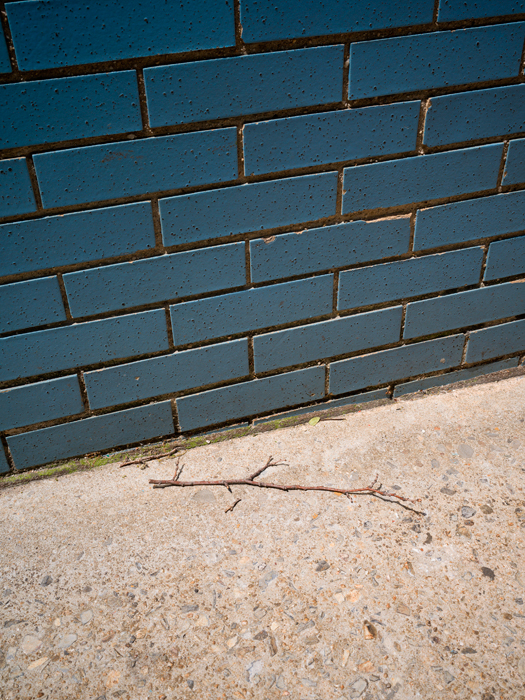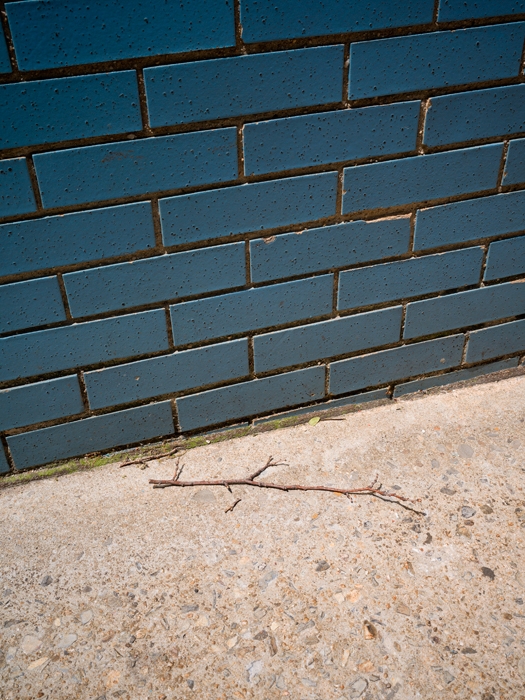Stephen Shore has devoted nearly his entire life to photography: his uncle presented him with a Kodak darkroom kit when Shore was six; at fourteen he walked into MoMA and handed his portfolio to the then- director of photography, Edward Steichen, who immediately bought three prints for the museum’s collection; in 1971, aged twenty-three, Shore became the first living photographer to be given a solo exhibition at New York’s Metropolitan Museum of Art (although it would be a further 21 years before the museum established photographs as an independent curatorial department). And today, aged seventy-one, he’s talking to me about Instagram from a sunlit room at his home in upstate New York on the other end of a Skype link.
Shore’s latest career milestone, a major retrospective at MoMA, was passed at the beginning of last year, and we’re discussing how he felt in the wake of yet another landmark moment. “Everyone dreams of a retrospective at MoMA, but then what do you do?” he asks, a characteristic question for someone who is constantly working and constantly on the lookout for the next thing. “I thought the way to solve that was to start a new body of work before the show even opened!”
That new body of work is titled Details. It was begun in 2017, a full six months before the MoMA show opened. The works, which are printed largescale (122 × 168 cm), are similar to the photos he posts on his Instagram feed. “I use a very high-end digital camera that has a touchscreen,” he points out. “It’s obviously a lot larger than a smartphone, but it’s used in somewhat the same way: the formal play – like keeping the almost random order of things within the frame, understanding that arrangement within the frame – still holds, even if they’re large. In some cases, they are the exact same kind of picture that I would take for Instagram.” Does he ever remake his Instagram posts for the large format? “The only time I’ve ever redone a picture with the good camera was this past week when I was out walking my dogs,” he replies. “I saw something that I really liked that I posted a couple of days ago, and so the next day I went back with my good camera. That’s the only time I’ve actually taken a picture with my phone and then literally reshot it.”

Thinking back to the start of Shore’s career, I find it inconceivable that someone could just walk into the photography department at MoMA and present their portfolio, let alone sell some of the works within it, to the institution. But I wonder if platforms such as Instagram have become something of a substitute for that today.
“I’ve been very fortunate to have had so many books published, and so I don’t feel like I need to have another medium to show my work,” he replies. “But I know there are a lot of photographers who have not been that fortunate and who relish a way of having a voice. This can be it for them,” he adds.
Shore quit school aged fourteen, to become what he calls a “cultural consumer”. He had been given Walker Evans’s photobook American Photographs (1938) a few years previously, but he was also interested in classical music – “I feel I’ve had a profound connection to the music of Bach since I was fifteen or so” – in the Theatre of the Absurd and contemporary drama, and in films – “I mean, I wasn’t going to school and if I had all that time free, I could go to a movie, or two!” he quips – and visual art. “I would spend hours and hours at the Met, just wandering around. I would do things like drop acid and go and look at the Andrea del Sartos and Van Dycks,” he recalls. He got his first photography job taking pictures for an orchestra during their concerts and rehearsals. When he was seventeen, he was a regular at Andy Warhol’s Factory, and spent his days documenting the scene.
The photographer is best known for recording the apparently banal details of everyday American life, a subject that can be traced throughout his work from the late 1960s through today, but particularly in photographs taken during a series of roadtrips across the country during the 1970s and published in book form as American Surfaces (1972–73) and Uncommon Places (1973–78). For American Surfaces, Shore was interested in “taking pictures that looked like the experience of seeing”: the diaristic, fast-paced snapshots (of people, diner breakfasts, motel interiors, cars, telephone lines, street signs), taken with a 35mm Rollei and printed at his local Kodak lab in New Jersey (part of the everyday aesthetic reflected in the growing popularity of the ‘family snapshot’ enabled by affordable cameras and mass-produced photo printing), would solve the issue of, as he put it recently, capturing ‘raw experience without any pretense of art’.


As is the case in American Surfaces, the subject of each photograph in Uncommon Places is somewhat unassuming: there are gas stations and street corners, things in store windows and a lot of roads. But these pictures turn their focus from raw experience towards a study in structure. Each photograph in the series examines principles of organisation and formal composition, and in doing so asks you to look beyond the commonplace – to let order transform an ordinary scene. You can see clearly the way some photographs focus on the rule of thirds (Broad Street, Regina, Saskatchewan, August 17, 1974, 1974, which is split between road, buildings and sky), or on one- or two-point perspective (Presidio, Texas, February 21, 1975, 1975, and Slot Car Raceway, Fourth Street, Harrisburg, Pennsylvania, July 4, 1973, 1973, respectively). These lead to more structurally complicated photographs such as West Fifteenth Street and Vine Street, Cincinnati, Ohio, May 15, 1974, 1974, in which an ordinary street scene slowly unfolds: a painted pawnshop advertisement is centred in the frame, two men are about to cross the road along a receding one-point perspective, which sits inside the golden ratio that arranges the entire composition and culminates at the righthand back wheel of a blue Cadillac. In this and in each of the photographs from Uncommon Places, the viewer is encouraged to organise the space – a bit like the way you would go about arranging the pieces of a puzzle, starting from the edges, or the frame, and working your way in.
I wonder how the idea of structure developed in Shore’s work. “The first published work of mine was in an Andy Warhol catalogue from 1968 by the Moderna Museet in Stockholm,” he recalls. “In my section, which was 170 pages, I repeated a picture once. I was thinking a bit in terms of musical structure and how something can be reintroduced… The day I sequenced it, the editor of the catalogue, Kasper König, said, ‘I have something to show you’. He spread out Ed Ruscha’s book Every Building on the Sunset Strip [1966] and it was like a door opened for me.”
Shortly after seeing this, Shore produced Los Angeles, California, February 4, 1969, a series of black-and-white photographs taken over the duration of one day, which has only recently been published in its entirety, by Roman Nvmerals. He calls this a conceptual series, and though different in its framing and structure, it’s easy to see how it rifts off the photographic work of Ruscha and that artist’s experiments with seriality and repetition (among them Twentysix Gasoline Stations, 1963, Thirtyfour Parking Lots, 1967, and of course Every Building on the Sunset Strip). Each photograph is shot from the sidewalk or from inside a car and printed strictly at 5 × 7.5 inches (13 × 19 cm). The pictures are of Enco and Standard gas stations, cars, buildings or intersections, all seemingly taken at random. But then you notice the motifs, recurrences, patterns: two photographs are taken of the driver from the back of a car, his silhouette framed by the windscreen that looks out onto apartment blocks and then a row of palm trees; there are four photographs taken in quick succession of a Volkswagen Beetle, each from a different position, a variation of the last; the same streak of cloud appears as a refrain in the sky of 11 photos; a man half-shaded in the driver’s seat of a truck glances sideways at the photographer, as another man scowls out of his car window – the only two photos in the series of 60 in which a person’s eyes meet the camera – a change in register that’s repeated in a picture of a woman sitting on a low wall set back from the sidewalk, her hand lifted up to shade her eyes from the sun, and another, in which a hand reaches out from the bottom righthand corner as if to wave down a cab.

Seriality also plays a role in Details, though not overtly in the finished prints. To find it, you have to look through Shore’s Instagram feed, where he’s been posting photos more or less every day since he joined in 2014. As well as being something of a testbed, the feed is a callback to American Surfaces and its diaristic approach – Shore even posts pictures of his breakfast from time to time, in the same manner that he did more than 40 years ago, though happily not in the #instafood aesthetic – where the boundary between his personal photos (of family, friends, dogs) and his work fades.
The Details works are mostly closeup shots of the ground, titled after their location and date. The resolution level of the largescale photographs renders every minute part of each picture sharp and magnified to a level that’s beyond what you’d normally notice, were you walking down the street. In one picture you immediately see a red straw, cigarette butts and a green leaf lying next to a tree root that seems to have erupted from tarmac – but you can also see a bottle top that lies half buried in stony soil and chewing gum mingling with tiny sprouts of moss; you can even see the feathery ends of each frond. In another photo, two strips of material lying on the ground cross each other in a manner that recalls a freeway interchange; little plants push their way up through the dry ground, the few forms of life in a desolate landscape of rocks, dead vegetation and litter; a cigarette butt, unrolled from its paper, blends in with the chalk-coloured stones. Another work, which looks like an aerial view of an arid landscape, and where cracks in the mud could be canyons, is offset by a photograph taken in England, of vivid green foliage that reveals minute pieces of bark and lichen peeling from thin branches.
“I’m photographing something that is the random leavings of many forces,” Shore explains. “Someone throws a cigarette there, it rains and a little soil washes away, somebody else drops something else a week later. All these things are the ‘leavings’ and the results of people, of natural forces, of ageing and weathering, and there’s a kind of randomness to it. And so one possible way of using photography is to try to take a picture that finds some kind of organic order in it that allows it to be almost as random-looking as it is, but because of the way the frame is placed on it, a viewer can still feel like they’re seeing an underlying order. Maybe this is oversimplifying things but it’s my best attempt at finding the order that actually exists there.” And with that, he lets the world click into place.
Stephen Shore is on view at Sprüth Magers, Los Angeles, through 30 August
From the Summer 2019 issue of ArtReview
